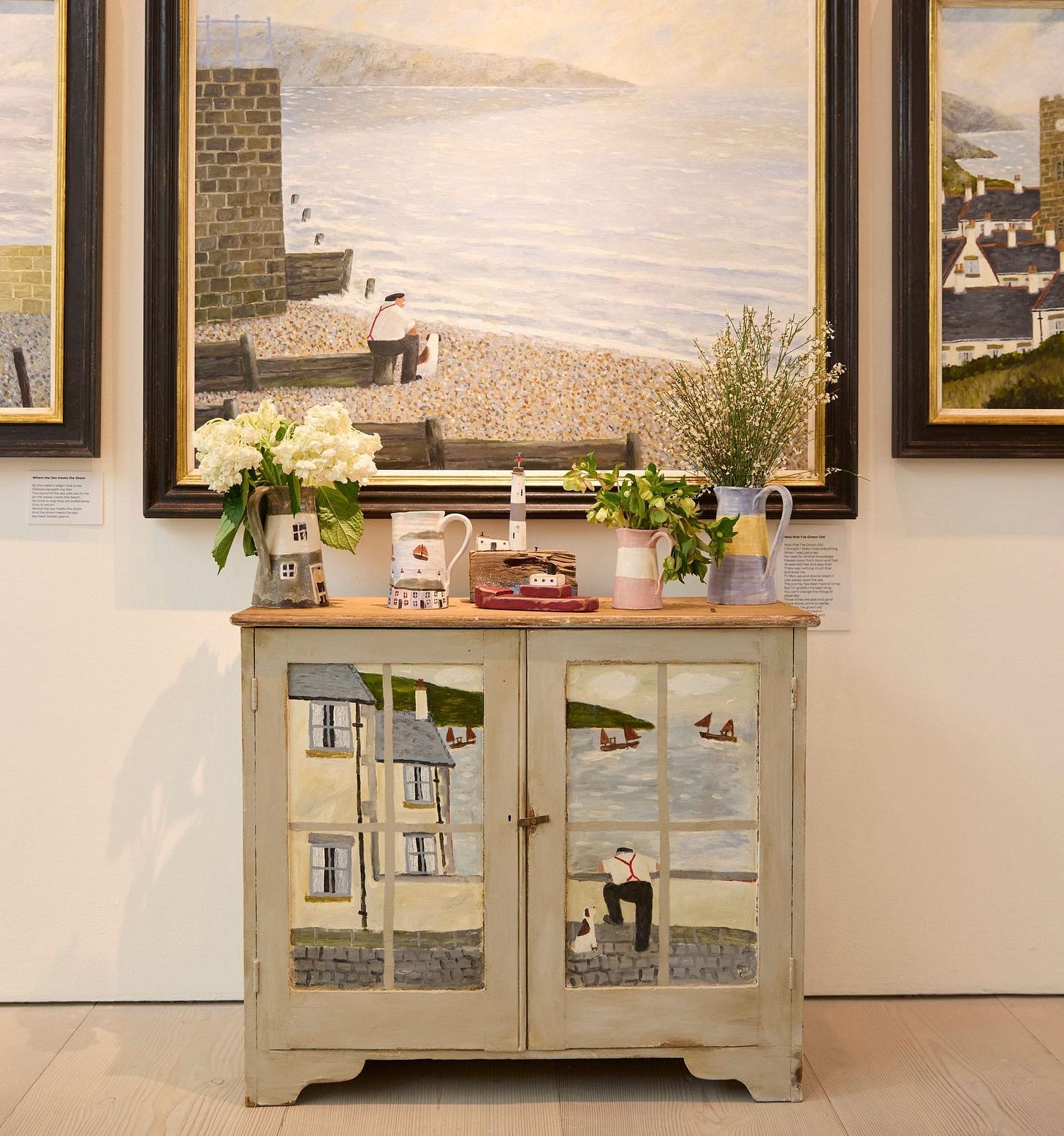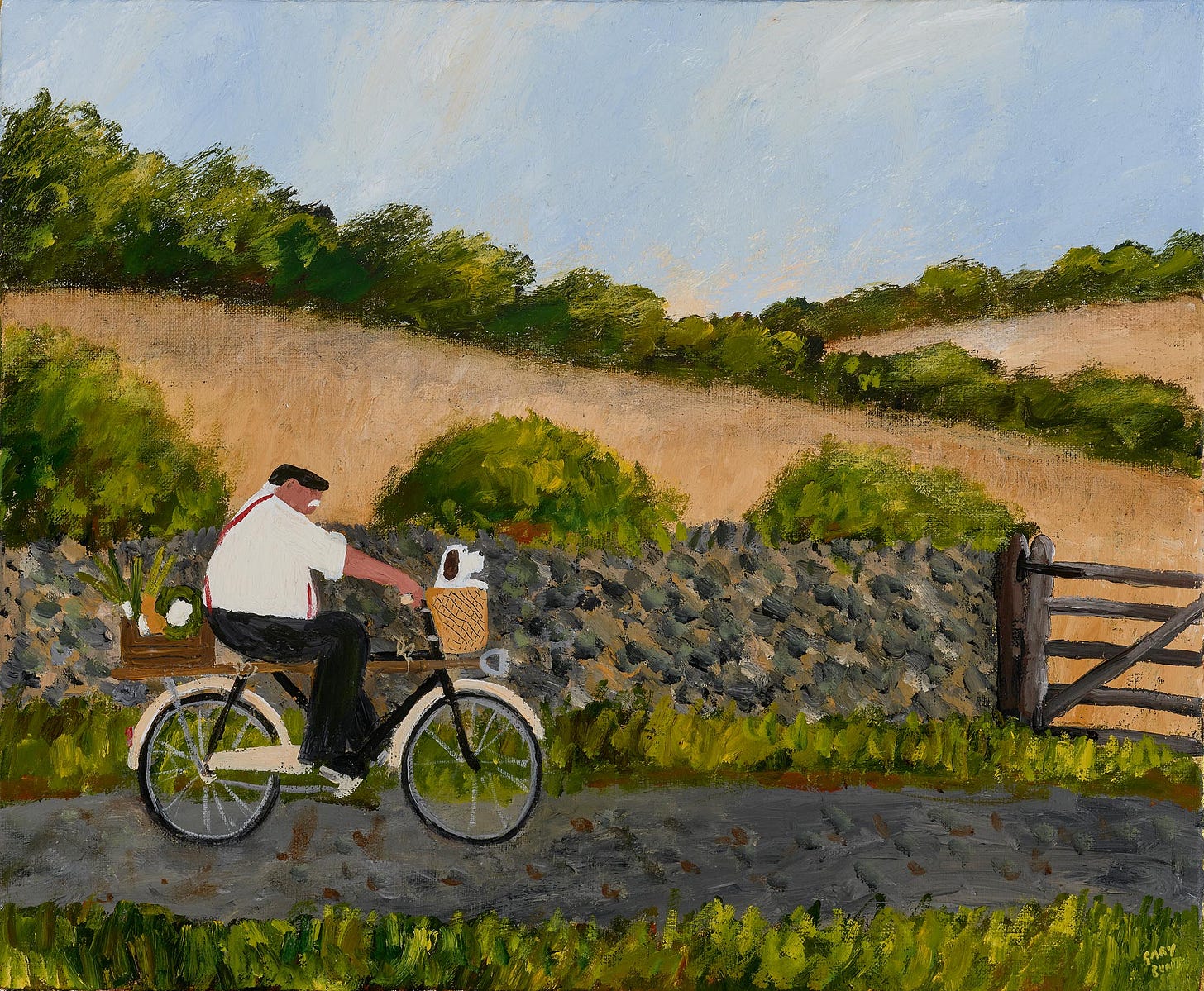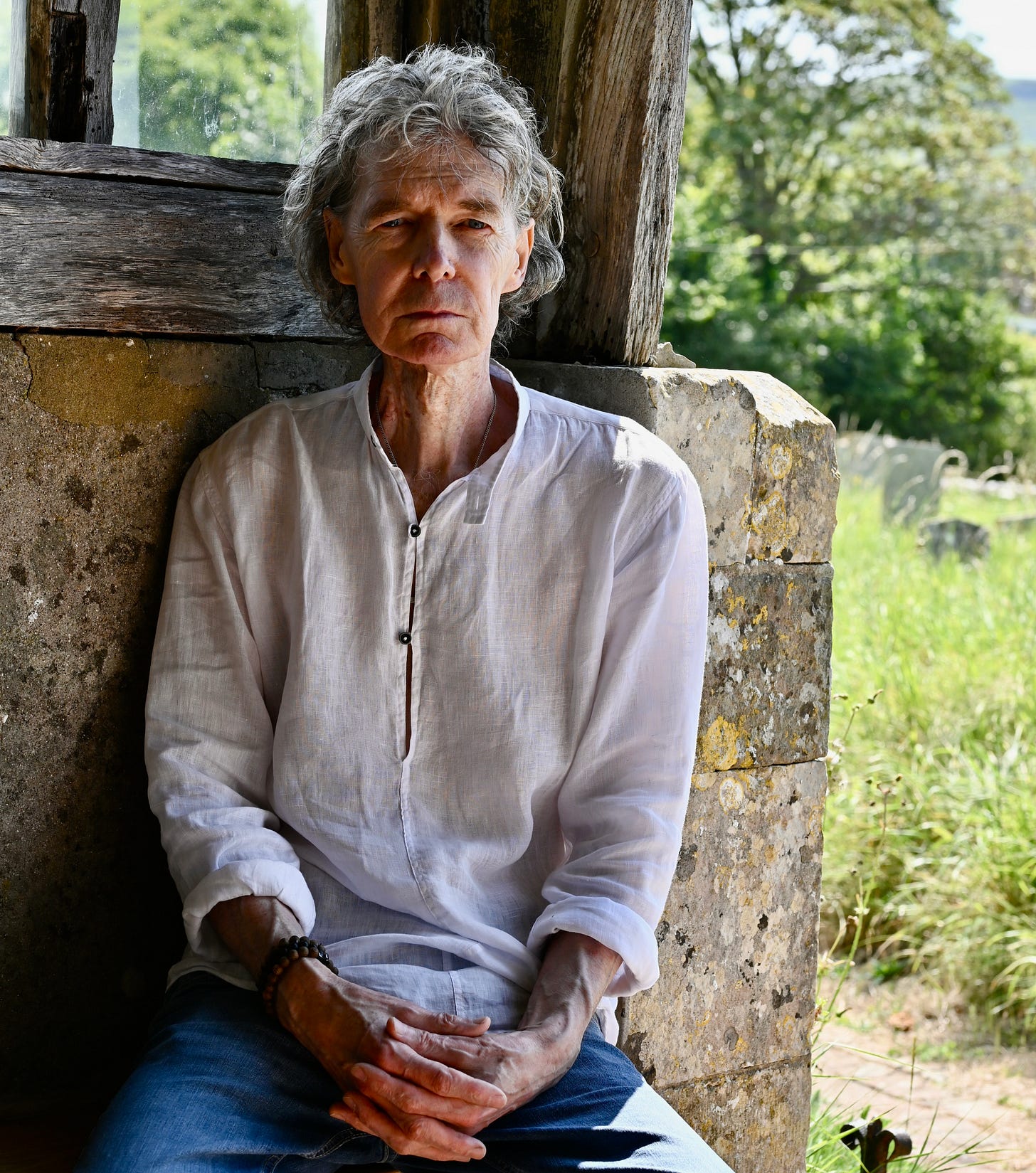A painter of country lanes and quiet souls
In memory of Gary Bunt, whose work feels like home

I’m not sure why I’m so often drawn to British artists. Is it because I spent my childhood reading English literature, and visiting London bookstores with my bibliophile father and sister, who viewed Hatchards and Blackwells (famous UK bookshops) as sacred pilgrimages? Is it something in the quiet coziness of the English countryside, a spirit that finds its way into so many of its artists’ works? Whatever the reason, a surprising amount of the art I share with you comes from the UK.
One of these artists is the wonderful Gary Bunt, whose work many of you especially loved. And Bunt, I recently learned, passed away on Friday, July 5, at the age of 68. In his honor, I’d like to share some of my favorites here.

For those of you who have found (or hope to find) your callings at a meandering pace over the course of a lifetime, Bunt was one of us. He came from a working class background; he became a builder and joined a rock band at 16. But he’d always loved painting and finally, at age 39, sold two Impressionist style works to a local gallery.
By age 41, though, the week of his first solo show, he was diagnosed with cancer of the vocal cords. He underwent treatment for two years, during which time he thought a lot about his happy childhood in a country village. When he emerged from the treatment, he found himself painting in a whole new style: simple and heartfelt, often depicting a burly and self-contained old man, and his dog, like this:
and this:

The old man represented an old age that the recovering Bunt never expected to attain. He became a much beloved stand-in for Bunt, and, somehow, for any of us who loved his work—regardless of whether we or our loved ones resembled the old man in age, gender, nationality, or anything else.
And it turns out that Bunt didn’t resemble the old man, either. Upon his death, I saw a photo of him for the first time, and was shocked to discover that he looked nothing like his calm and stocky alter ego. Bunt had a slight build and a melancholic look:
The old man, it turns out, is modeled on Bunt’s father — though Bunt meant for the figure to be “anybody’s old man.” The dogs in his work also come in various breeds and colors; Bunt wanted “people to imagine the dog to be their dog, and name them.” His quiet, comforting figures invite us to see not just his story, but ours—tender, ordinary, and more meaningful than we know.
*
I hope you enjoyed this tribute to Gary Bunt. I’d love to know:
*if you’ve found (or hope to find) your calling (or favorite pastime), later in life;
*if you enjoy (or do not enjoy) Kindred Letters focusing on the work of a particular artist;
*whether anything in Bunt’s life story or artwork especially speaks to you.
If you enjoyed today’s Kindred Letter, please do share and (if you haven’t yet) subscribe!




What a lovely tribute to a quiet soul. His face touches a melancholic chord within me, and a beauty underneath. I love his paintings. Thank you for this, Susan.
I am grateful in retirement, to have deepened and been able to appreciate and express myself with my writing and painting. Part of my soul that were quiet during the "productive" years, but thankfully never went away. I find my home within these days. Just yesterday I had to leave my regular volunteer shift at the zoo, being overcome with such a deep sadness and loneliness that I could not stop the tears. And I knew that I needed to come home, and to be alone. The loneliness was a call to express tears that needed to come out and to give myself the space to do that. Aging continues to teach me to lean into the feelings and submerge myself, rather than trying to distract. I am grateful.
Thank you Susan for this tribute. I didn't know of him. I live in England and the first painting, with a church steeple peeping brought a lump to my throat. I'm 71 and walked lanes with hedgerows full of wild roses with my grandfather when I was very small. As I age, I am so very thankful for the time he gave me, my first introduction to nature. And yes, I do like you introducing artists in these essays. Thank you.